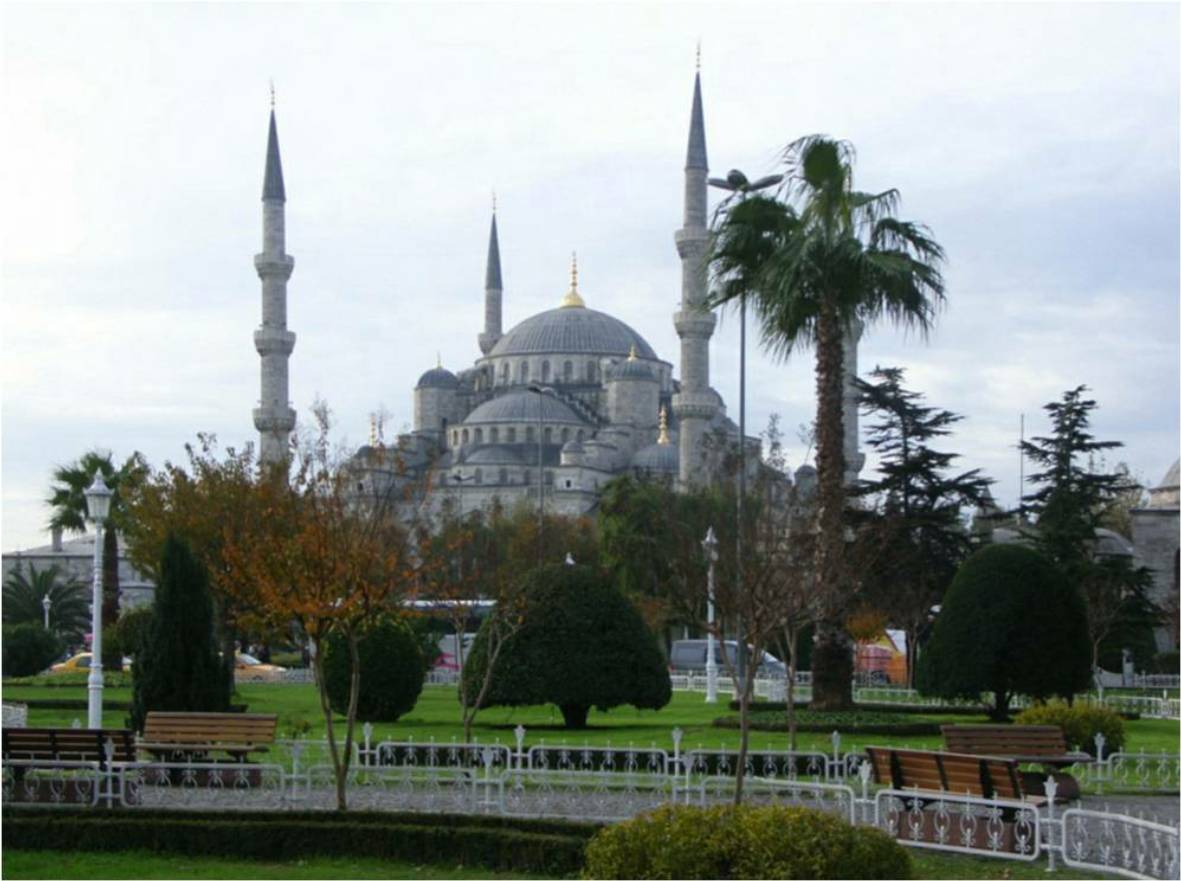Istanbul
The Blue Mosque

The Blue Mosque, or to give it its’ correct name, The Sultan Ahmed Mosque named after the 14th Ottoman Sultan Ahmed I who commissioned its construction. Started in 1609 it took seven years to build and where it was normal to pay for such projects with the spoils of war, Ahmed had not gain any victories so had to pay for it from existing funds. The mosque was built on the site of the Palace of the Byzantine emperors which had to be demolished. The design of the Mosque incorporates both Ottoman and Byzantine architecture.
The most striking feature of the exterior is the beautiful domes that cascade down from the great central dome. None of the exterior is blue - the name ‘Blue Mosque’ comes from the colour of the tiles of the interior. The main dome has a height of 43 metres and is 23.5 meters in diameter. A notable feature of the Blue Mosque is that it has six minarets as it is unusual to have more than four. The main entrance is at the West although tourists and non-worshipers use the entrance in the north. An iron chain hangs from the western entrance in order to ensure that the sultan, who was the only person allowed to enter on horseback, had to lower his head each time he entered.
The interior is lit through more than 250 stained glass windows and numerous chandeliers. The lamps inside the mosque were once covered with gold and gems although these have been pillaged or removed for museums. At its lower levels and at every pier, the interior of the mosque is lined with more than 20,000 handmade ceramic tiles. The tiles at lower levels are traditional in design, while at gallery level their design is of flowers, fruit and cypresses. The floors are covered with carpets, which are regularly replaced due to wear. The most important element in the mosque is the mihrab, which is made of sculptured marble. On the right of the mihrab is the minber, or pulpit, where the Imam stands when delivering his sermon. The design of the mosque ensures that everyone in the mosque can see and hear the Imam. In front of the mosque are the burial buildings and tombs of Ahmed I and members of his family.
To see more photographs and take a virtual tour of the site click on the photoshow below.
View in Google Street View and Google Earth
Panorama Available at airpano.com
